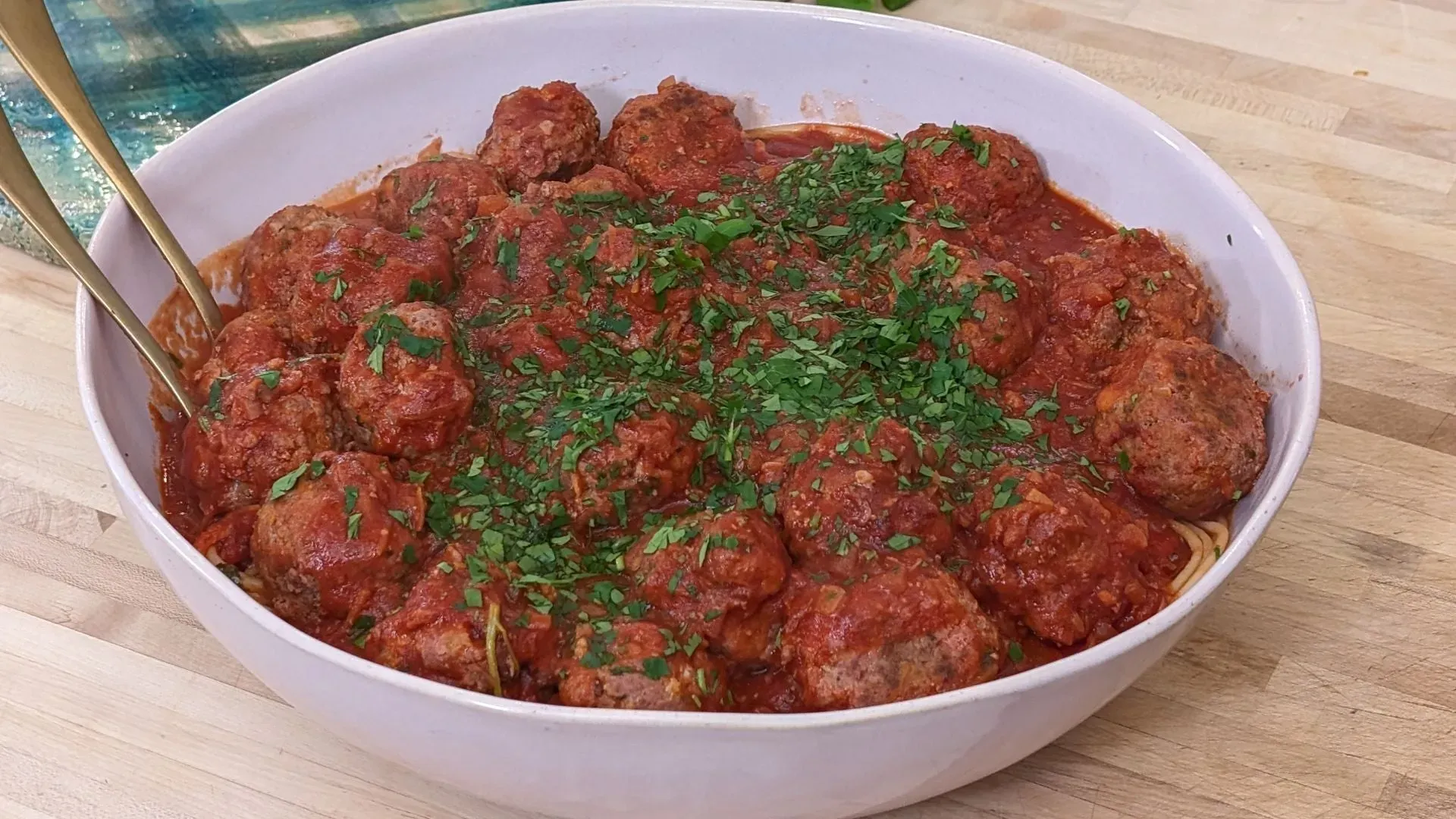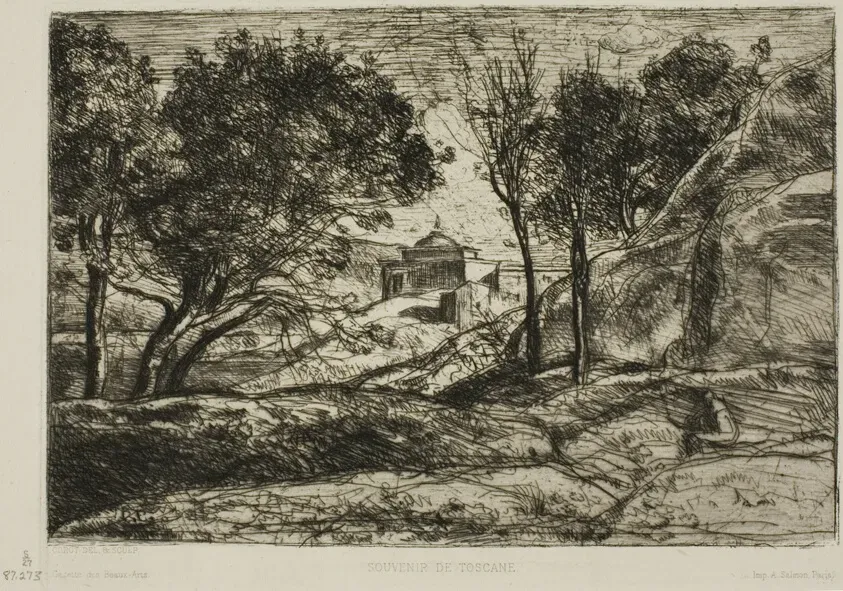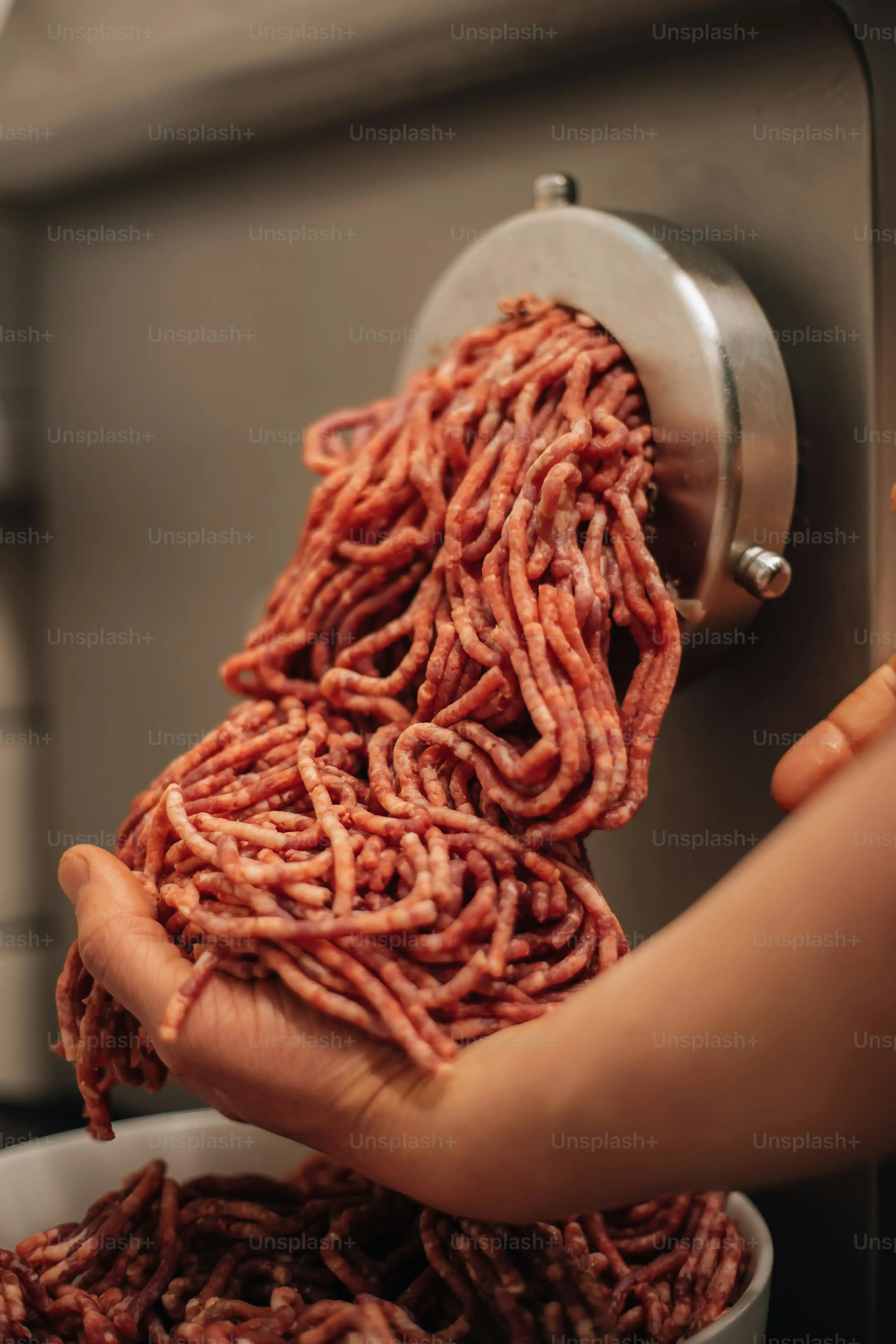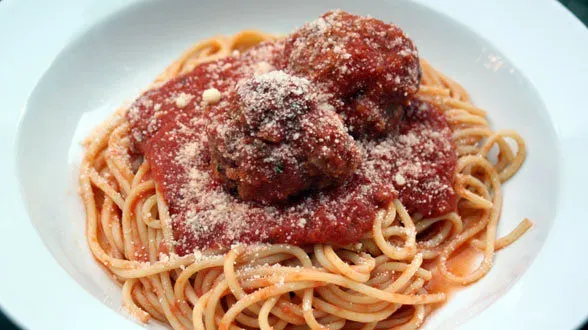Alright, let's be honest. Everyone has *their* spaghetti and meatballs recipe. The one Nonna swore by, the one you perfected after five tries, the one that just feels like home. But what happens when a culinary force like Rachael Ray takes on this classic, especially after soaking up the vibes in Tuscany? Things get interesting. We're not just talking about throwing some ground meat and sauce together. We're diving into the specifics of the rachael ray in tuscany spaghetti and meatballs recipe that captured attention. Forget those bland, dry versions you might have suffered through. This recipe promises something more, something rooted in the simple, fresh flavors Italy is famous for. We'll walk you through why this particular recipe stands out, the pantry essentials you'll need, how to craft those perfect meatballs, and finally, how to bring it all together for a meal that might just make you feel like you're dining under a Tuscan sun. Ready to trade your usual weeknight routine for a taste of Italy? Let's get started.
Why Rachael Ray's Tuscan Spaghetti and Meatballs Recipe is Different

Why Rachael Ray's Tuscan Spaghetti and Meatballs Recipe is Different
It Starts with the Sauce, Not Just Crushed Tomatoes
so you think spaghetti sauce is just tomatoes, garlic, and maybe some onion simmered for a while? Rachael Ray's approach in her Why Rachael Ray's Tuscan Spaghetti and Meatballs Recipe is Different angle throws a curveball right from the start. She's not just dumping canned tomatoes into a pot. Her Tuscan version often incorporates ingredients you might not expect in a standard American-Italian joint's sauce. Think carrots and onions getting softened first, adding a subtle sweetness and depth before the tomatoes even show up. It's a foundational layer, built slow and steady, that gives the sauce a richer, more complex flavor profile than the quick-and-dirty versions. This isn't just red gravy; it's a simmered foundation designed to cling perfectly to pasta and complement those meatballs.
Meatballs That Aren't Just Balls of Meat
Now, let's talk about the other half of the equation: the meatballs. Too many recipes churn out dense, heavy hockey pucks. Rachael's Tuscan take, and a key part of Why Rachael Ray's Tuscan Spaghetti and Meatballs Recipe is Different, focuses on keeping them light and flavorful. This usually involves a mix of meats – beef, pork, maybe even veal – and a binder that isn't just breadcrumbs soaked in milk. We're talking about things like finely grated cheese *mixed into* the meatball itself, fresh herbs chopped fine, and sometimes even a touch of red pepper flake for a little kick. And the cooking method? Often, they hit the oven first to get a nice crust and render some fat before finishing their journey simmering in that layered sauce. This two-step process locks in moisture and builds flavor, preventing that dry, crumbly texture nobody wants.
So, what are some of the key differences we're seeing?
- Layered sauce foundation (carrots, onions first)
- Meatball mix includes grated cheese and fresh herbs
- Meatballs are often baked before simmering in sauce
- Focus on depth of flavor over speed
Gathering Ingredients for Your Rachael Ray in Tuscany Spaghetti and Meatballs

Gathering Ingredients for Your Rachael Ray in Tuscany Spaghetti and Meatballs
Starting with the Stars: Tomatoes and Meat
Alright, before you even think about simmering, you need to get the right stuff in your basket. For Gathering Ingredients for Your Rachael Ray in Tuscany Spaghetti and Meatballs, the quality of your core components makes a huge difference. For the sauce, Rachael often leans towards crushed tomatoes, but not just any can off the shelf. Look for good quality San Marzano style tomatoes if you can. They have a natural sweetness and lower acidity that makes a richer sauce without needing tons of sugar. For the meatballs, a mix is usually key. Ground beef is standard, but adding ground pork brings moisture and flavor. Some recipes even suggest a bit of ground veal for tenderness. Don't skimp here; fresh, good-quality meat makes a noticeable impact on the final product.
The Flavor Builders: Herbs, Cheese, and More
Beyond the main acts, the supporting cast in your ingredient lineup is crucial for that distinct Tuscan feel. You'll definitely need fresh herbs – basil and parsley are non-negotiable. Chop them fine; they're going *into* the meatballs and the sauce, not just sprinkled on top at the end. Grated cheese, usually Parmigiano-Reggiano, goes right into the meatball mix, adding saltiness and helping with texture. Garlic, of course, and onions or shallots for the sauce base. Sometimes a pinch of red pepper flakes shows up for a little warmth. And don't forget good olive oil. Tuscan cooking is built on it, and Rachael uses it generously to build those initial flavor layers in the sauce.
What's one ingredient you think people often overlook in spaghetti and meatballs that makes a big difference?
Pantry Staples and Tuscan Touches
You'll also need the basics: salt, black pepper, maybe some dried oregano. Breadcrumbs are usually in the meatball mix, often Panko for a lighter texture, or sometimes even fresh bread soaked in milk. Wine, typically dry red, is a classic addition to the sauce base, adding depth and complexity as it simmers down. Some recipes might call for beef or vegetable stock to thin the sauce slightly or add another layer of flavor. Think about the elements that make Italian cooking feel authentic – fresh produce, quality cheese, good olive oil, and those aromatic herbs. Gathering Ingredients for Your Rachael Ray in Tuscany Spaghetti and Meatballs means getting these right.
Mastering the Meatballs: Steps from the Rachael Ray in Tuscany Recipe

Mastering the Meatballs: Steps from the Rachael Ray in Tuscany Recipe
Mixing Up the Perfect Meatball Base
so you've got your quality ingredients ready for Mastering the Meatballs: Steps from the Rachael Ray in Tuscany Recipe. This isn't a free-for-all; there's a method to the meatball madness. Rachael often starts with that mix of ground beef and pork – the pork is key for moisture, trust me. You'll combine the meats in a large bowl, but don't just dump everything in and go at it like you're kneading dough. Overmixing is the enemy of a tender meatball. Next come your binders and flavorings. Finely chopped fresh parsley and basil are non-negotiable. Grated Parmigiano-Reggiano goes in for that salty kick and savory depth. Breadcrumbs, often Panko or fresh bread soaked in milk and squeezed dry, help keep things light. Some recipes call for an egg or two to bind it all together, plus salt, pepper, and maybe a pinch of red pepper flakes if you like a little heat. The goal is to mix just until everything is combined, not until it's a paste.
The Two-Step Cooking Technique
Now for the cooking part, and this is where Mastering the Meatballs: Steps from the Rachael Ray in Tuscany Recipe often diverges from the traditional stovetop simmer from the get-go. Instead of dropping raw meatballs directly into sauce, Rachael frequently bakes them first. You'll roll your mixture into uniform balls – aim for roughly golf-ball size so they cook evenly. Place them on a baking sheet, often lined with parchment paper for easy cleanup, and pop them in a hot oven. This initial bake does a couple of things: it gives the meatballs a nice sear and crust on the outside, locking in juices, and it helps render out some of the excess fat. Once they've got some color and are partially cooked through, they transfer to that simmering sauce you worked so hard on earlier. Finishing them in the sauce allows them to absorb all those wonderful flavors and become incredibly tender.
What's the biggest mistake people make when forming meatballs?
Serving Up Your Rachael Ray in Tuscany Spaghetti and Meatballs Creation

Serving Up Your Rachael Ray in Tuscany Spaghetti and Meatballs Creation
Getting the Pasta Right for Plating
Alright, you've put in the work. The sauce has simmered, the meatballs are baked and tender. Now comes the moment of truth: bringing it all together and Serving Up Your Rachael Ray in Tuscany Spaghetti and Meatballs Creation. Don't just dump sauce on top of dry pasta. This is crucial. Cook your spaghetti (or whatever pasta shape you prefer) until it's perfectly al dente. Before you drain it, reserve about a cup or so of that starchy pasta water. This liquid gold is your friend. Drain the pasta, then immediately add it back to the warm pot or a large serving bowl. Ladle a good amount of your gorgeous Tuscan sauce over the hot pasta and toss gently. The heat of the pasta helps the sauce cling, and adding a splash of that reserved pasta water helps emulsify everything, creating a glossy, luscious coating. This isn't optional; it makes all the difference between okay pasta and amazing pasta.
Adding the Meatballs and Finishing Touches
Once your pasta is coated in that rich sauce, it's time for the stars of the show: the meatballs. Gently nestle the finished meatballs into the sauced pasta. You can either mix them in completely or place them strategically on top, whatever looks appealing to you. Now, for those essential finishing touches when Serving Up Your Rachael Ray in Tuscany Spaghetti and Meatballs Creation. A generous shower of freshly grated Parmigiano-Reggiano is non-negotiable. The salty, nutty cheese melts slightly from the heat of the dish and adds another layer of flavor. A sprinkle of fresh basil leaves, torn or lightly chopped, brings a pop of freshness and color that cuts through the richness. Some folks like a drizzle of good quality extra virgin olive oil right before serving, which adds aroma and a silky mouthfeel.
Think of these elements as the final brushstrokes on your culinary canvas:
- Freshly grated Parmigiano-Reggiano
- Torn or chopped fresh basil leaves
- A drizzle of quality extra virgin olive oil (optional but recommended)
- Maybe a pinch more red pepper flakes if you like heat
Pairing Your Tuscan Feast
You've mastered the Serving Up Your Rachael Ray in Tuscany Spaghetti and Meatballs Creation. Now, what else goes on the plate or table? Keep it simple and classic. A crisp green salad with a light vinaigrette is perfect to balance the richness of the pasta and meatballs. Crusty bread for soaking up any extra sauce is practically mandatory. And for drinks? A medium-bodied red wine, perhaps a Chianti Classico from Tuscany itself, complements the flavors beautifully. If wine isn't your thing, sparkling water with a lemon slice or a simple iced tea works just fine. The goal is to let the spaghetti and meatballs shine, with supporting players that enhance, not overpower, the main event.
Wrapping Up Your Tuscan Spaghetti Dream
So there you have it. Tackling the rachael ray in tuscany spaghetti and meatballs recipe isn't rocket science, but it does involve paying attention to those little details that make a difference. It's about building flavor from the ground up, getting the texture right on those meatballs, and letting everything simmer into something truly comforting. You've gone through the steps, maybe made a small mess (it happens), and now you're left with a plate of food that actually delivers on the promise of Tuscan-inspired goodness. It's not just another Tuesday night meal; it's a reminder that sometimes, the classics are classic for a reason, especially when given a thoughtful twist. Enjoy the leftovers, if there are any.